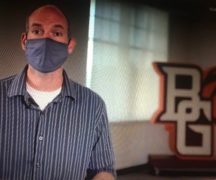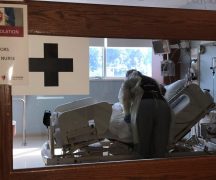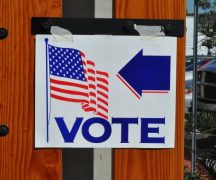Ohio Capital Journal
Ohio is on track to narrowly fall short on a projection the state health department sent to the federal government on COVID-19 testing.
While the data reflects testing growth, Gov. Mike DeWine described the goal his administration submitted as unacceptably low, and researchers say Ohio is still not conducting enough testing to understand the full scope of its coronavirus outbreak.
Through August, about 24,100 Ohioans were tested per day for COVID-19 on average, according to Sunday data.
The Ohio Department of Health, in documents sent to the U.S. Department of Health and Human Services, projected more than 24,200 Ohioans would be tested per day (diagnostic PCR testing), on average.
Earlier this month, DeWine referred to the August goal as “simply unacceptable” for how low it is.
As summer fades away into flu season, Ohio will need to scale up its testing more dramatically to meet more ambitious goals. Experts fear COVID-19 will accelerate with flu season as outdoor activities become untenable, and testing shortages are exacerbated given the similarity in symptoms between flu and COVID-19.
Ohio estimated it would test 750,000 people in August, compared to 800,000 in September and more than 1 million tests in November.
“We’re going to break out of this,” DeWine said Thursday of low testing trends. “We’re not where we want to be.”
He attributed some of the malaise in testing to Ohio’s comparative success staving off the virus, noting “we’ve never been red hot.”
He said new strategies are in the works, like implementing pool testing, and broadening the supply chain for the mix of sample collecting equipment, large laboratory machinery, media and lab time required.
Testing problems have arisen in different aspects of Ohio’s pandemic response.
The Cincinnati Enquirer reported Thursday that Ohio paused a new saliva-based COVID-19 testing strategy at assisted living centers after “inconsistencies” in test data were found. DeWine confirmed as much and said the program is on pause to validate the saliva tests.
DeWine chalked the dustup to taking a “calculated chance” and a byproduct of learning how to thoroughly surveil a new disease with new testing regimes.
“When you start new testing, sometimes there’s a glitch,” he said.
ODH gathered surveillance data this summer on residents through a mix of diagnostic and serology (antibody) testing. Officials this week delayed release of that data, which could serve to illuminate a fuller scope of the outbreak than current testing allows.
Public health officials have estimated the true spread of the coronavirus could be up to 10 times as high as health departments are reporting.
Insufficient testing has been a recurring state and national problem, though Ohio has made progress by some measurements.
The latest test positivity data from Friday shows slightly less than 5% of people who were tested in the prior week had COVID-19. The WHO advises that positivity rates above 5% suggest a dearth of testing to properly track an outbreak.
Researchers with the Harvard Global Health Institute say the U.S. needs to test about 1.4 million people per day to rein the virus under control.
While their model shows Ohio is only testing 84% of its share (based on population, infection rates and other data), it’s faring better than all but 12 states and Washington D.C.
Private labs have also whittled down the delay between when samples are taken and when the lab analyzes them and produces results.
***
Also from Ohio Capital Journal:
‘Soul-crushing’: Ohio’s performing arts regroup after COVID-19 losses
Opera Columbus was ready for its annual gala, the biggest fundraiser of the year for the performing arts company. The food was ordered and the venue was set for the March event.
The next day, Ohio Gov. Mike DeWine announced the effective closure of the state, as the spread of COVID-19 began locally.
“It was financially jolting, as you can imagine,” Peggy Kriha Dye, general director and CEO of Opera Columbus, told the Capital Journal.
The food was donated to charity, the decorations were taken down. Next came the reevaluation of opera in the city.
“We ended up cancelling about 100 contracts,” Dye said. “We cancelled our fall season immediately.” READ MORE
Sen. Brown says Dems will overcome challenge of reaching voters during pandemic
The political conventions have come and gone. In a normal presidential election year, the candidates would spend the fall touring the country, making sure to spend plenty of time in the swing state of Ohio.
That won’t be the case this year, but U.S. Sen. Sherrod Brown said Friday he is confident his party will tilt a virtually tied Buckeye State into candidate Joe Biden’s favor this November.
In lieu of rallies and campaign events, that means more dropping leaflets off to homes and organizing volunteers by Zoom calls. Akron Democrats hosted a socially-distanced “Drive-Thru Party” this past weekend, with fundraising supporters chatting with candidates and receiving a catered meal — all without having to leave their cars.
Such is campaigning in 2020.
“I think the candidates have been pretty quick to adapt,” Brown said. READ MORE





